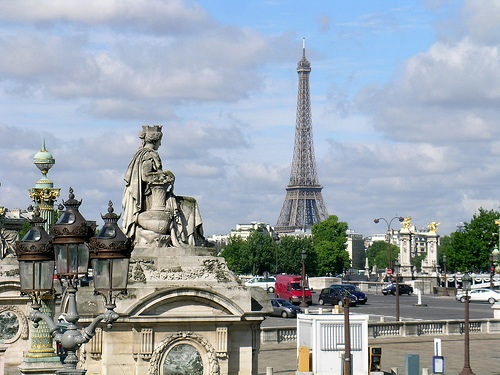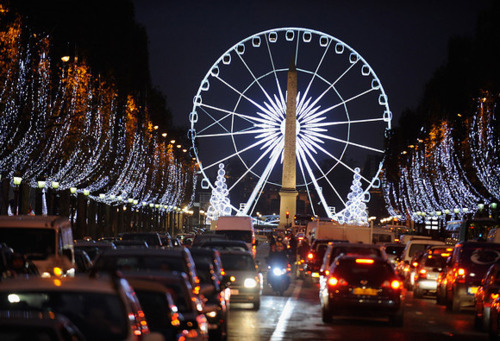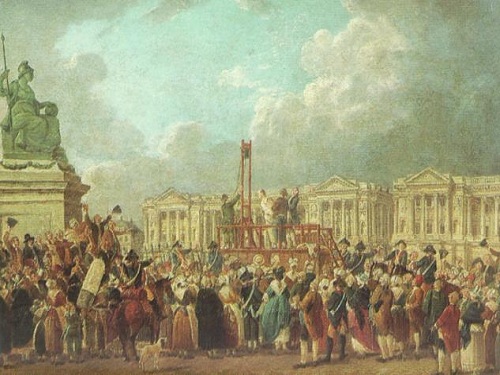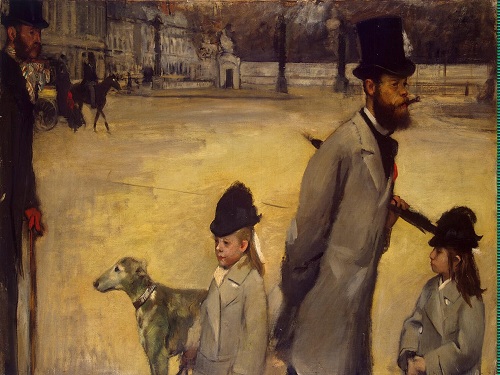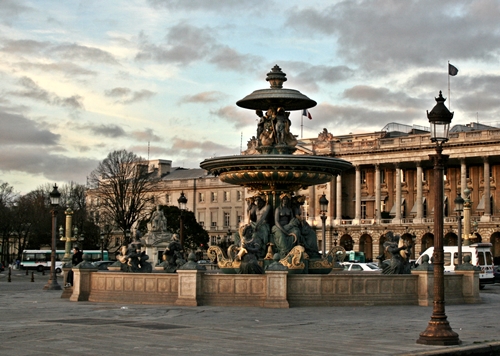Filled with fascinating statues, state-of-the-art sculptures, rostrum columns, majestic dimensions, impressive fountains and rich history, the majestic Place de la Concorde is perhaps the most famous public space in all of France and one of the top tourist attractions in the heart of the City of Lights.
Ideally nestled at the eastern end of the Champs-Elysees avenue, bordering the River Seine and the magnificent Tuileries Gardens, this immense beautiful esplanade attracts thousands of tourists every year who come to experience its vibrant beauty and enjoy the spectacular views it affords of the Triumphal route towards the Arc de Triomphe and the Louvre. A busy intersection ensuring access to Champs-Elysees, the Place de la Concord is also where a wide range of cultural events and public gatherings takes place. At Christmas, the square becomes more and more beautiful and illuminated, offering a truly different experience of the whole district. Come and enjoy!
The Place de la Concorde has experienced many names. The construction of the square began in 1754 on behalf of the French King Louise XV and nine years after the construction, its center was adorned with the statue of the King and was named then the ‘Place Louise XV.’ In 1792, during the French Revolution, the statue of Louise XV was destroyed and replaced by the large statue of Liberte (freedom) and the square was renamed ‘Place de la Revolution.’ After changing its name several times, in 1830 the statue was named ‘Place de la Concorde’ (the French word ‘Concorde’ meaning ‘agreement’).
Interesting Facts
- Place de la Concord was designed in 1755 by Jacques Ange Gabriel and is an octagon area, covering some 86,400 square meters.
- Each corner of the octagonal square features a statue representing a French city, including Lyon, Marseille, Bordeaux, Lille, Strasbourg, Rouen, Nantes and Brest, while in the center of the square stands the most striking piece – the 3,200-years-old Obelisk of Luxor, which is a pink granite column weighing 220 tons and with a height of 23 meters that comes from the Egyptian temple of Luxor.
- The author of the statue representing the city of Strasbourg is Juliette Drouet, a muse of Victor Hugo.
- The two fountains – the Maritime Fountain and the Fountain of the Rivers showcase the resources gained from France’s seas and waters.
- At the north end of the place you will find the luxurious ‘palace’ Hôtel de Crillon, one of Paris’ most leading prestigious buildings. Formerly, its elegant salons served as the winter quarters for the famous Chateaubriand family while, at present, they house the French automobile club.
- During the French revolution a guillotine was installed at the center of the square, right where the King Louis XV’s statue stood, and Place de la Concorde became the site of executions. Mari-Antoinette, Louis XVI, Philippe Égalité and Danton were among those famous people who lost their heads here.
- There is a painting by Edgar Degas, ‘Viscount Lepic and his daughters crossing the Place de la Concord,’ created in 1875, which is rare among paintings of that period featuring walking in Paris like that. He achieved surprising effects through new graphic techniques and now the painting can be found in Hermitage, St. Petersburg.
If you ever happen to visit the mesmerizing French Capital, do not skip this 18th century marvel and all it has to offer!
